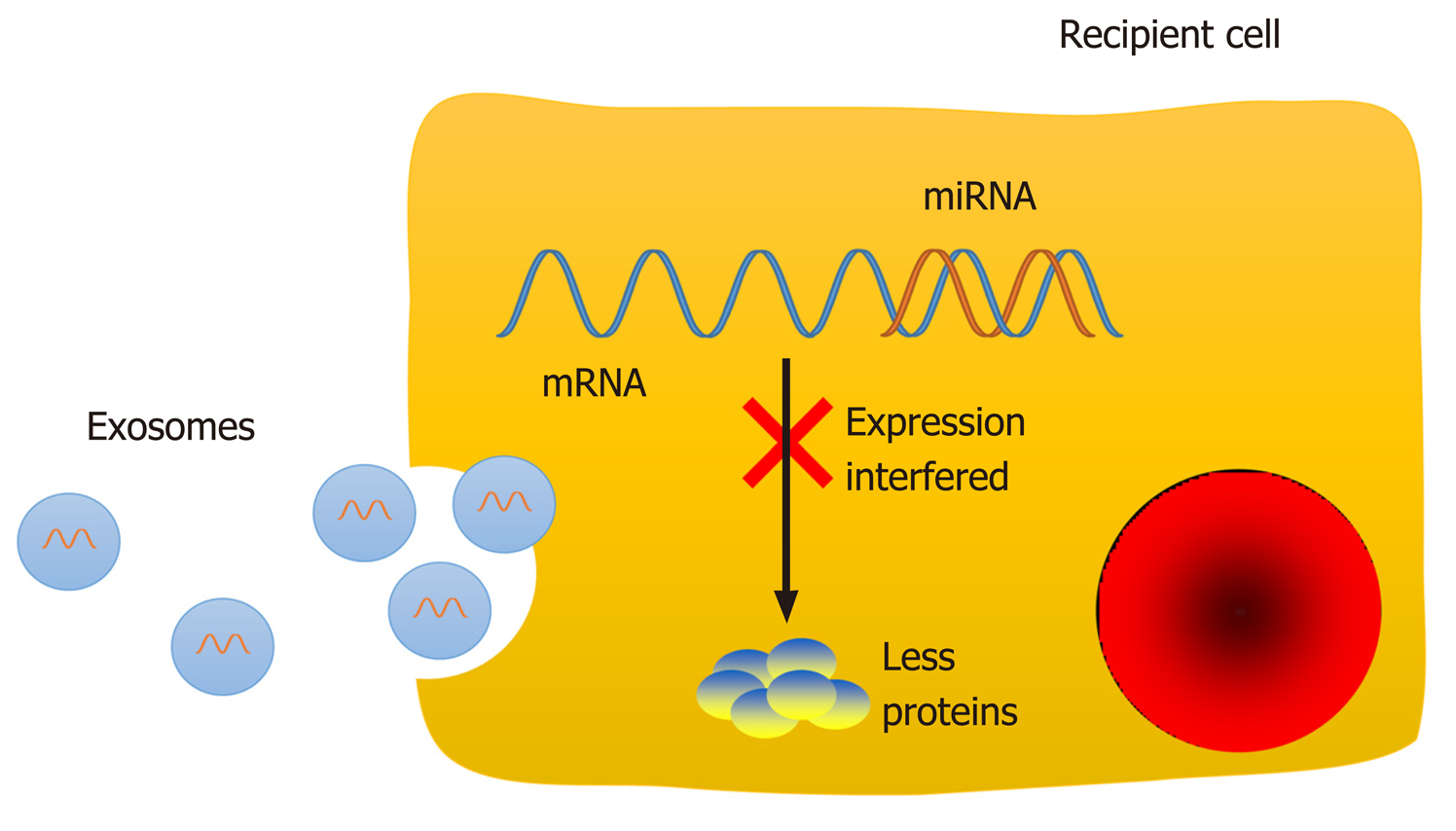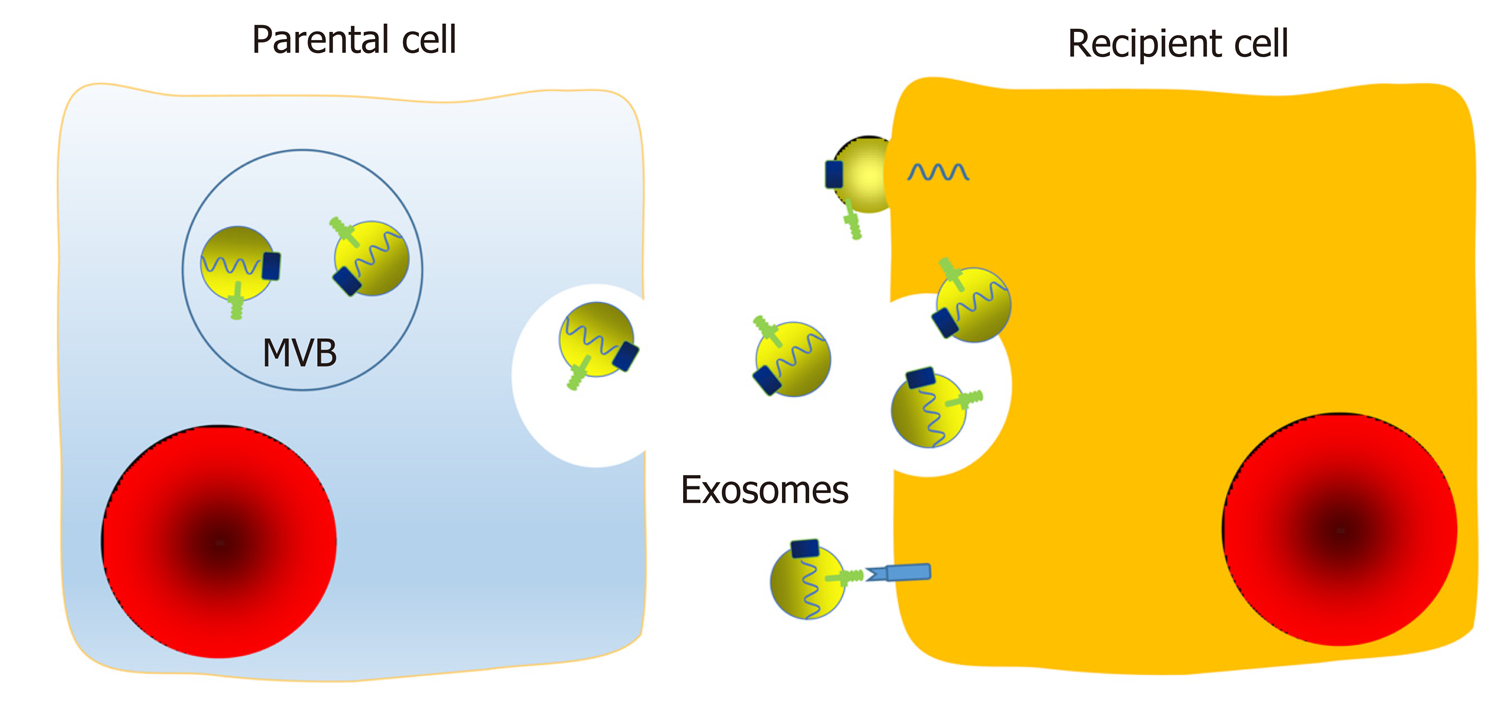Copyright
©The Author(s) 2020.
World J Gastroenterol. Jun 14, 2020; 26(22): 2889-2901
Published online Jun 14, 2020. doi: 10.3748/wjg.v26.i22.2889
Published online Jun 14, 2020. doi: 10.3748/wjg.v26.i22.2889
Figure 1 Components of exosomes.
Exosomes are approximately 30-100 nm in diameter and contain a set of proteins, lipids, and nucleic acids. Exosomal protein compositions vary and include a series of common proteins that have been demonstrated to be present or enriched in exosomes in spite of cell origins and tissues, such as tetraspanins (CD9, CD63, and CD81), integrins, and adhesion molecules. Some metabolic enzymes, ribosomal proteins, transmembrane and signal transduction molecules, and special ligands could also be detected. miRNA: microRNA.
Figure 2 Function of exosomal microRNAs in recipient cells.
The RNA molecules in exosomes are cell-specific and tissue-specific. MicroRNAs (miRNAs) can interact with the mRNA 3'-untranslated region via their seed sequence and then interfere with the expression of target genes post-transcriptionally to regulate physiological and pathological processes, such as cell proliferation, differentiation, migration, and apoptosis. miRNA: microRNA.
Figure 3 Mechanisms of transfer of exosomal components between cells.
Exosomes are membrane-bound extracellular vesicles that are released from their parental cell membrane by shedding or budding of multivesicular bodies. Exosomes contain a set of proteins, lipids, and nucleic acids. Exosomes can interact with surface membrane molecules, fuse with the recipient cell membrane directly, or be endocytosed in a nonselective way to transfer their inner components. In addition, exosomes can release small aggregates or be cleaved by proteases, and then be taken up via a phagocytic mechanism by neighboring cells or act as ligands. Therefore, exosomes may regulate functions of neighboring cells and distant cells by means of autocrine, paracrine, and endocrine mechanisms, as a novel communication method between cells. MVB: Multivesicular bodies.
- Citation: Lv J, Zhao HP, Dai K, Cheng Y, Zhang J, Guo L. Circulating exosomal miRNAs as potential biomarkers for Barrett's esophagus and esophageal adenocarcinoma. World J Gastroenterol 2020; 26(22): 2889-2901
- URL: https://www.wjgnet.com/1007-9327/full/v26/i22/2889.htm
- DOI: https://dx.doi.org/10.3748/wjg.v26.i22.2889















